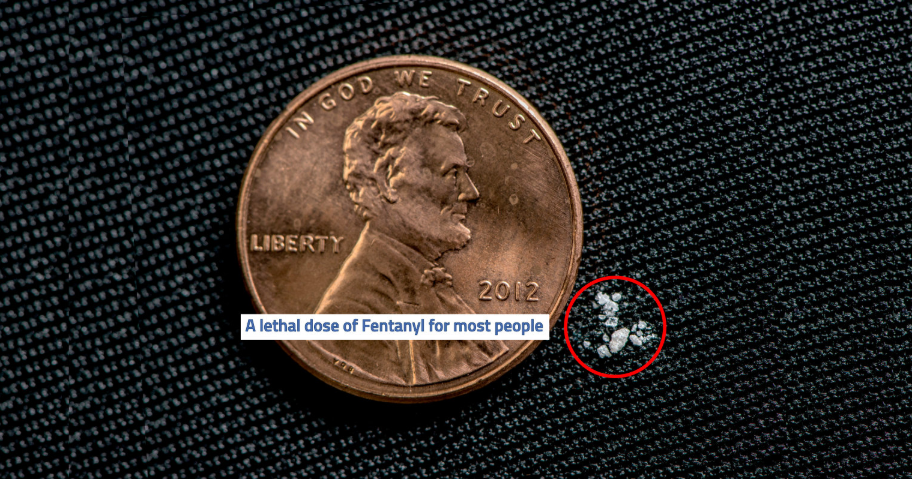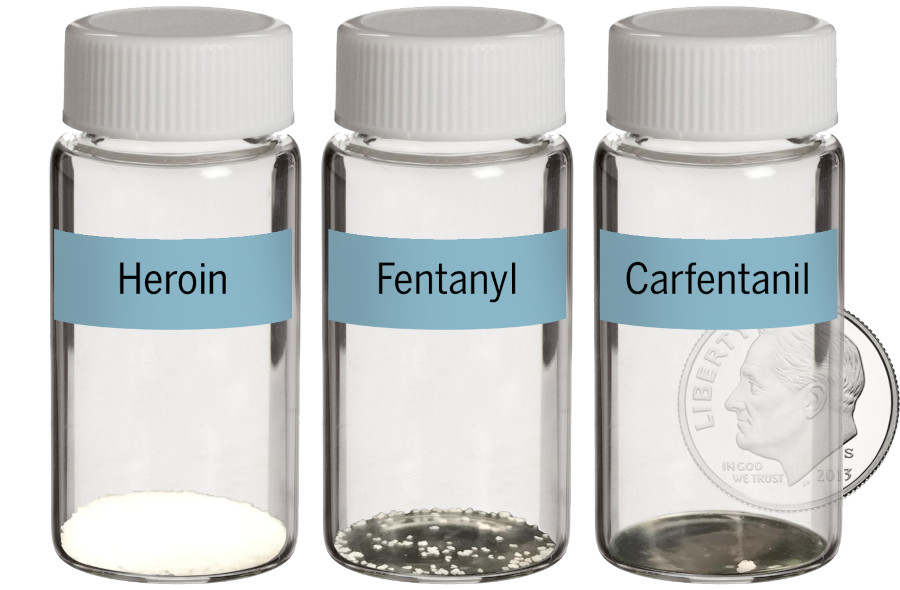What Is Fentanyl?
By: DeAnza Bonzelaar
According to the National Center for Drug Abuse Statistics, “fentanyl abuse statistics indicate it is the world’s deadliest opioid, causing almost half of all overdose deaths nationwide.”1
Fentanyl was first developed in 1959 and is considered a “miracle drug” by pain specialists. It is a heavily regulated legal medication prescribed for pain relief in cancer patients and post-surgery.² It is a synthetic opioid, meaning it is not derived from the opium poppy plant. Instead, fentanyl and other synthetic opioids, such as methadone, are entirely lab-produced. It is 50- to 300-times more potent than morphine.³
As reported by the Wall Street Journal, “the illicit form of fentanyl, a powder that is often mixed into other drugs, has overtaken the drug market in the US.”4
- 2 mg of fentanyl is a lethal dose, but doses as small as 0.25 mg place the user at a high risk of overdose.5
- A lethal dose of heroin is 100 mg while 250 mg of cocaine is a lethal dose.6


- Carfentanil is 10,000 times more potent than morphine and 100 times more potent than fentanyl.7
- Carfentanil is also used to tranquilize elephants and other large mammals.8
Fentanyl and its derivative, carfentanil, are white powdery substances that look like cocaine or heroin. Drug dealers mix them with heroin and cocaine to presumably make the drugs stronger.
Carfentanil is so powerful it poses a significant threat to first responders and law enforcement personnel who touch it by accident. It also acts so quickly that Narcan may not be effective.9
Fentanyl is so dangerous because its use leads to unprecedented accidental overdoses. Per The Detroit News:
The federal government counted more accidental overdose deaths in 2021 alone than it did in the 20-year period from 1979 through 1998…experts believe deaths surged not only because the drugs are so powerful, but also because fentanyl is laced into so many other illicit drugs, and not because of changes in how many people are using. In the late 2010s – the most recent period for which federal data is available – deaths were skyrocketing even as the number of people using opioids was dropping.”10
- NCDAS, “Fentanyl Abuse Statistics,” National Center for Drug Abuse Statistics. https://drugabusestatistics.org/fentanyl-abuse-statistics/ (accessed October 24, 2023).
- Julie Wernau, “What Is Fentanyl and Why Is It So Dangerous?” The Wall Street Journal, October 24, 2022. https://www.wsj.com/articles/what-is-fentanyl-drug-opioid-health-safety-explained-11658341650 (accessed October 24, 2023).
- NCDAS, “Fentanyl Abuse Statistics.”
- Wernau, “What Is Fentanyl and Why Is It So Dangerous?”
- NCDAS, “Fentanyl Abuse Statistics.”
- Ibid.
- Just Think Twice, “Five Quick Facts: Carfentanil,” Just Think Twice. https://www.justthinktwice.gov/article/five-quick-facts-carfentanil (accessed October 24, 2023).
- Ibid.
- Ibid.
- Geoff Mulvihill, “As fentanyl drives overdose deaths, mistaken beliefs persist, October 28, 2022. https://www.detroitnews.com/story/news/nation/2022/10/28/as-fentanyl-drives-overdose-deaths-mistaken-beliefs-persist/69599540007/ (accessed October 24, 2023).
Subscribe to the resource blog below!
We strive to be a resource for those involved personally in addiction and for affected loved ones. Within our resource blog, we post information on topics such as substance use disorder and addiction, mental health, and treatment and recovery among others. Let us know what other topics you would like to learn more about.


